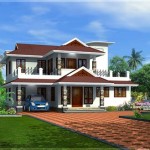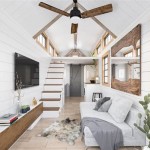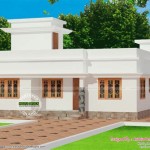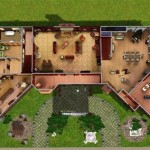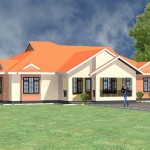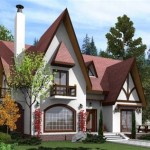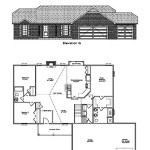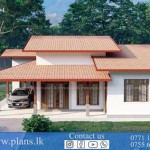Pump House Plans: Walls
Pump house walls play a crucial role in protecting vital pumping equipment from the elements and ensuring the longevity and efficiency of the system. Properly designed and constructed walls contribute to security, insulation, and overall structural integrity. Understanding the various factors involved in choosing the right wall materials and construction methods is essential for a successful pump house project.
Several factors influence the choice of wall materials for a pump house. Climate considerations are paramount, as the walls must withstand temperature extremes, precipitation, and potential wind loads. The location of the pump house, whether above ground, partially submerged, or fully underground, also dictates specific requirements for wall strength and waterproofing. Budgetary constraints can also influence material choices, with options ranging from cost-effective solutions to more durable and expensive alternatives.
Concrete is a popular choice for pump house walls due to its inherent strength, durability, and resistance to moisture and pests. Concrete walls can be poured in place or constructed using precast concrete panels, offering flexibility in design and construction. Reinforced concrete, incorporating steel bars or mesh within the concrete matrix, provides added strength and resistance to cracking, making it suitable for larger pump houses or locations prone to seismic activity.
Concrete block, also known as cinder block or concrete masonry units (CMUs), presents another viable option. These interlocking blocks are readily available, relatively inexpensive, and offer good insulation properties. Concrete block walls can be reinforced with steel rebar and filled with concrete for added strength. Proper sealing is crucial to prevent moisture penetration through the porous nature of the blocks.
Metal buildings provide a cost-effective and quick-to-erect solution for pump house enclosures. Steel or aluminum panels are typically used, offering good resistance to weather and pests. Insulation can be added within the wall cavities to regulate internal temperatures and prevent condensation. Proper ventilation is essential to minimize moisture buildup and corrosion.
Wood framing, often used in residential construction, can also be employed for pump house walls. Pressure-treated lumber is essential to resist rot and insect damage. Wood framing offers flexibility in design and can be combined with various exterior cladding materials such as siding, stucco, or metal panels. Proper sealing and insulation are critical for protecting the pump equipment and ensuring energy efficiency.
Wall thickness is a crucial consideration in pump house design. The thickness of the walls must be sufficient to support the roof load, withstand wind pressures, and provide adequate insulation. Building codes and local regulations often dictate minimum wall thicknesses for specific applications and geographic locations. Engineers can perform structural calculations to determine the appropriate wall thickness based on the specific design and environmental conditions.
Insulation plays a vital role in maintaining a stable temperature within the pump house, protecting the equipment from freezing in cold climates and overheating in hot climates. Insulation options include rigid foam board, fiberglass batts, spray foam, and loose-fill insulation. The choice of insulation depends on the wall material, climate conditions, and budget. Vapor barriers are essential to prevent moisture from penetrating the insulation and reducing its effectiveness.
Proper ventilation is crucial for preventing moisture buildup, condensation, and the potential for mold growth within the pump house. Ventilation can be achieved through passive vents, powered exhaust fans, or a combination of both. Adequate airflow helps regulate temperature and humidity levels, protecting the pump equipment and extending its lifespan.
Doors and access points are integral components of pump house walls. Doors should be appropriately sized to allow for easy access to the equipment for maintenance and repairs. Secure locking mechanisms are essential to prevent unauthorized entry and vandalism. Consideration should be given to the material and insulation properties of the doors to maintain the overall efficiency of the pump house enclosure.
Windows are often incorporated into pump house designs to provide natural light and ventilation. Security considerations should be taken into account when choosing window types and placement. Double-paned windows with insulated glass can improve energy efficiency by reducing heat transfer. Proper sealing around window frames is essential to prevent air and water leaks.
Finishes for pump house walls can range from simple paint or stain to more durable coatings such as epoxy or polyurethane. The choice of finish depends on the wall material, aesthetic preferences, and desired level of protection. Finishes should be resistant to moisture, chemicals, and UV radiation to ensure long-term durability and maintain the appearance of the pump house.
Regular maintenance of pump house walls is essential to ensure their long-term performance and protect the enclosed equipment. Inspections should be conducted periodically to identify any cracks, leaks, or signs of deterioration. Prompt repairs and preventative maintenance can help avoid costly damage and extend the lifespan of the pump house structure.

Pump House With Guard Room Dwg File Paper Art Sculpture Floor Plans

How To Build An Underground Pump House Howtospecialist Step By Diy Plans

Pumphouse An Overview Sciencedirect Topics
Pump Houses Panelized Or Welded Steel Panel Built

Foundation Of Pump House And Guard Room Plan Elevation Section Detail Dwg File Cadbull

Poolhouse With Covered Patio Kitchen Bath And Pump House Storage Space 62968dj Architectural Designs Plans

Plan And Fence Of The Pump House Guard Room Autocad Drawing Cadbull

Blueprint Pump House Elevations Floor Plan Section Dudley Farm Farmhouse Outbuildings 18730 West Newberry Road Alachua County Fl Elevation Drawing Plans

File Pump House Elevations Floor Plan And Section Dudley Farm Farmhouse Outbuildings 18730 West Newberry Road Alachua County Fl Habs 565 Sheet 16 Of 22 Png Wikimedia Commons
Pump Houses Panelized Or Welded Steel Panel Built

